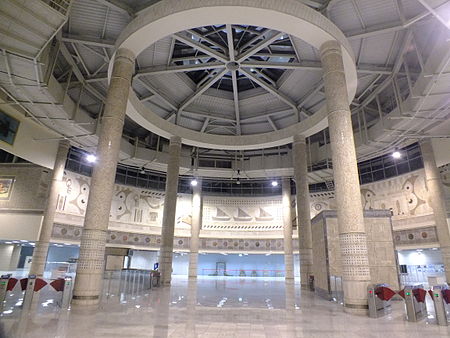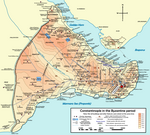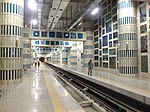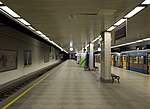Yenikapı Transfer Center
2013 establishments in TurkeyFatihIstanbul metro stationsRailway stations in Istanbul ProvinceRailway stations opened in 2013 ... and 1 more
Transfer Centers in Turkey

Yenikapı Transfer Center (Turkish: Yenikapı Aktarma Merkezi), referred to as Yenikapı, is an underground transportation complex in Istanbul. It is located in south-central Fatih in the neighborhood of Yenikapı, hence the name of the hub. The complex is right next to the, indefinitely closed, Yenikapı railway station and a short walk away from the Yenikapı Ferry Terminal and İDO ferry service. Yenikapı complex links two stations of Istanbul Metro to a railway station of the Turkish State Railways on the trans-Bosphorus Marmaray tunnel. Yenikapı is the largest rapid transit station in Turkey.
Excerpt from the Wikipedia article Yenikapı Transfer Center (License: CC BY-SA 3.0, Authors, Images).Yenikapı Transfer Center
Namık Kemal Caddesi, Istanbul
Geographical coordinates (GPS) Address Nearby Places Show on map
Geographical coordinates (GPS)
| Latitude | Longitude |
|---|---|
| N 41.0053 ° | E 28.9516 ° |
Address
Yenikapı Marmaray İstasyonu
Namık Kemal Caddesi
34096 Istanbul
Türkiye
Open on Google Maps









